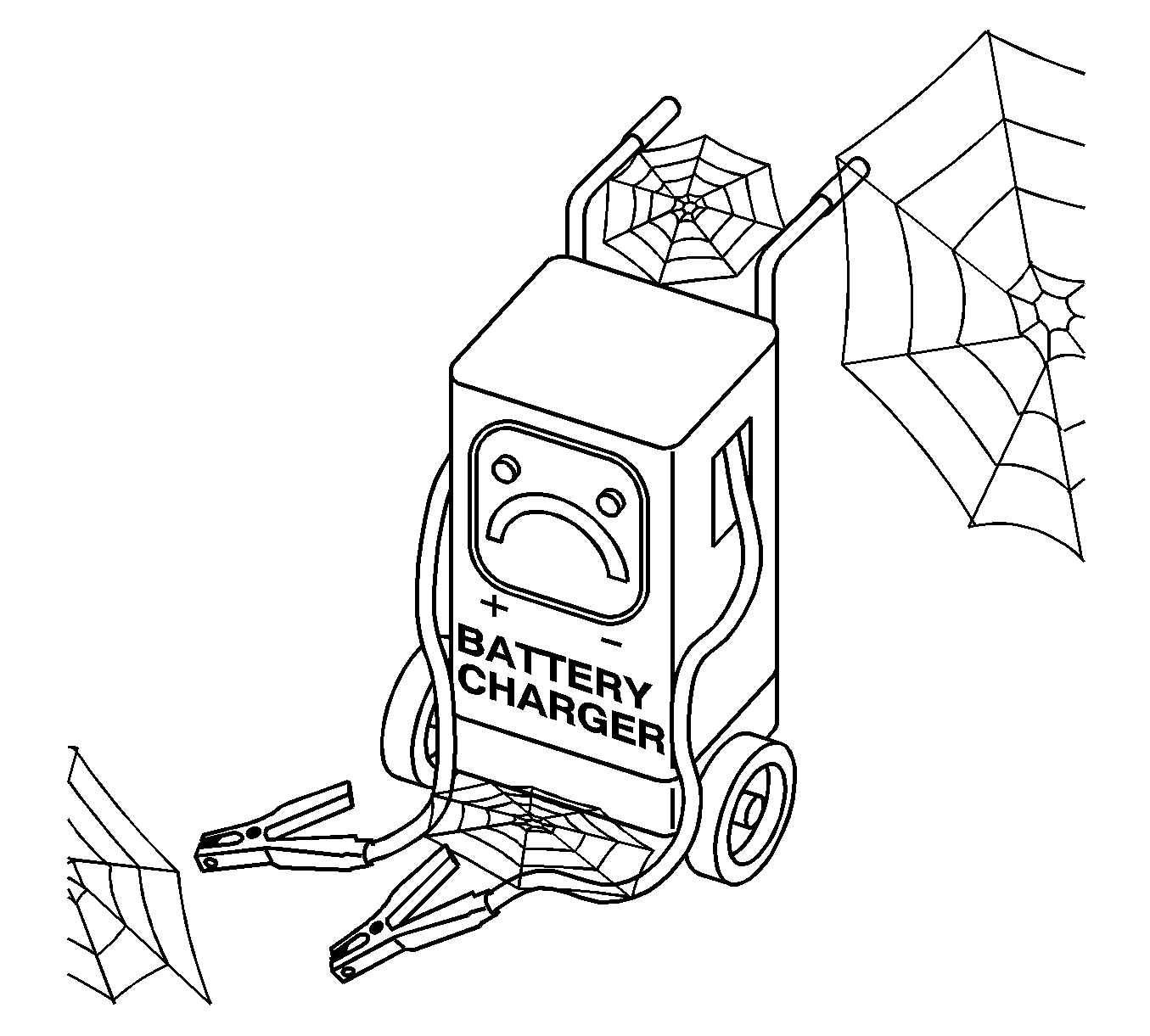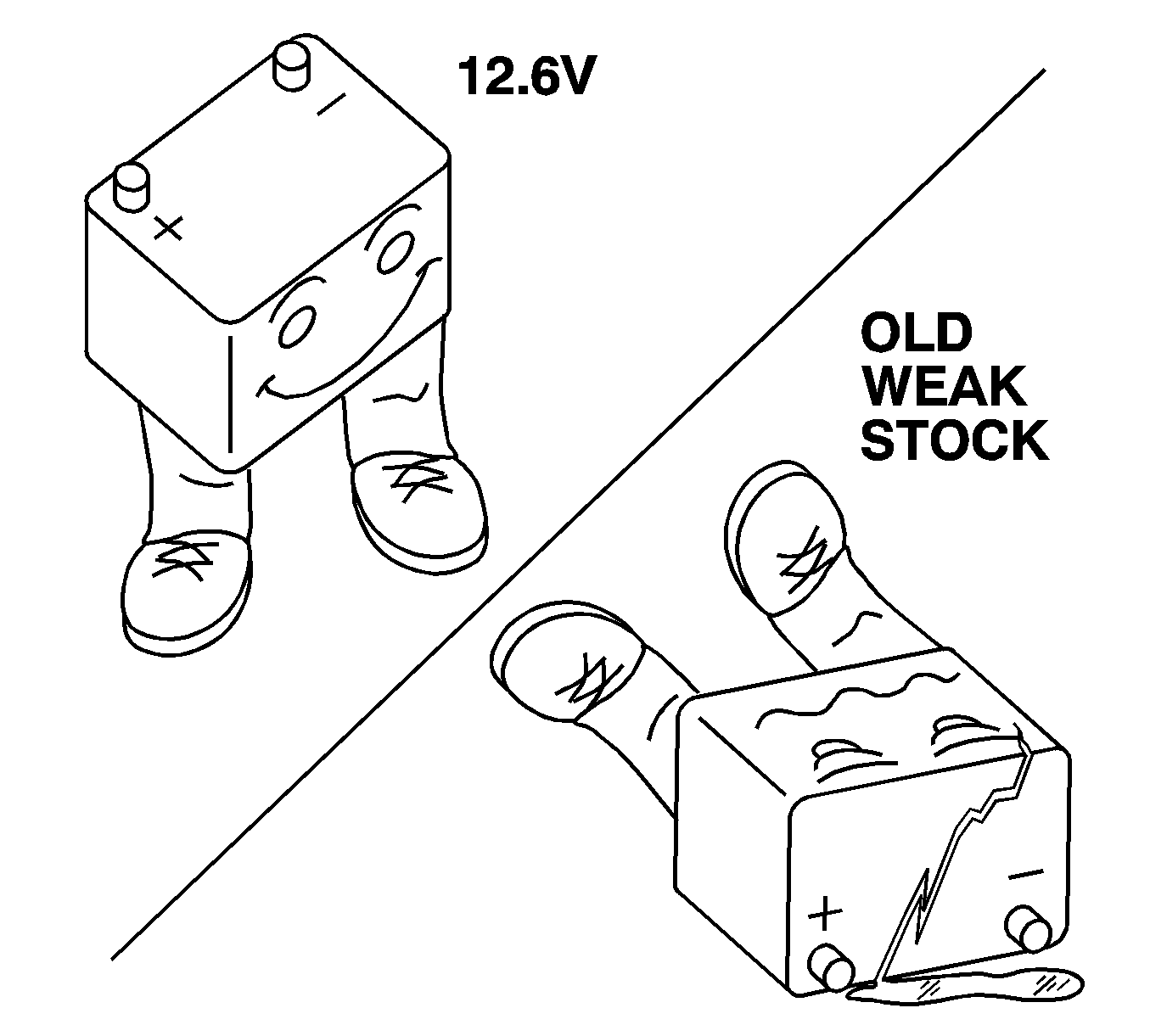GM Dealer Visits: Proper Management of Batteries in Dealer Parts Stock/Vehicle Inventory

| Subject: | GM Dealer Visits: Proper Management of Batteries in Dealer Parts Stock / Vehicle Inventory |
| Models: | 2009 and Prior GM Passenger Cars and Light Duty Trucks (including Saturn) |
| 2009 and Prior HUMMER H2, H3 |
| 2009 and Prior Saab 9-7X |
| Attention: | Please direct this bulletin to the Service and Parts Managers as well as through normal routing in the Dealer Service Center. |
2008 GM Dealer Visits Completed!
Recently representatives from General Motors Service and Parts Operations had the opportunity to visit a selection of GM dealership parts departments across the country. The visits were to observe and discuss service and parts needs with the applicable dealership management teams. One area of opportunity for improvement in sales and customer satisfaction was the Proper Management of In-Stock Batteries.
Observations of parts departments in many GM dealerships throughout the U.S. revealed these three reoccurring roadblocks:
| • | No NEW Battery Rotation Strategy that Ensures a "First-In, First Out" System. |
| • | Inadequate and/or No Storage Racks, Containers or Facilities to Store New & Used Batteries. |
| • | No consistent method to Deliver a Fully Charged and Tested Battery to the Customer. |
Caution: Improper lead acid battery management may result in bodily injury, or short/long-term health risks from contact with toxic lead and corrosive sulfuric acid contained inside the batteries.
Caution: Used batteries should be handled with care, and examined for leaks. Battery cores ready for return should be properly stored inside resin cases, (or dedicated corrosion resistant storage bins), to prevent any exposure to acid and/or fumes. It is NOT acceptable to have batteries sitting on concrete floors.
Battery Rotational Strategy -- First-In, First-Out!
Batteries should be rotated so that the oldest stock is used before the newest stock. Lead-Acid Batteries are much like the perishable foods sold in a supermarket, both must be maintained and rotated to keep your stock fresh. Keeping your batteries rotated is much easier if you have the proper storage racks, employ a simple system and assign responsibility for the tasks. Battery stock rotation, testing, and charging are key elements of proper battery management. Let's look at a sample of how to establish a good workable system of proper of battery handling.
1st: Proper Battery Storage Racks
A variety of battery rack types are available to organize and properly store lead acid batteries. Heavy Duty Storage Racks greatly aid in proper organization and rotation of "in-stock" batteries.
Racks are available in the GM Dealer Equipment Catalog as well as through commercially available aftermarket sources. Dealers are encouraged to obtain safe, sturdy, and corrosion-resistant storage racks that are large enough to support their stock of batteries and designed to accommodate a rotation system. An ideal battery storage rack is available through the GM Dealer Equipment Catalog (1-800-GMTOOLS): GM Part Number 450-11135-000. This rack is gravity fed, so that if you load new stock from the back, oldest stock will always be at the front.
Level shelves are also acceptable, but are harder to physically organize.
Rescue Your Batteries From The Back of The Battery Rack -- Rotate Your Stock With Each Shipment!

2nd: Organize Existing Stock
If your parts department is not currently compliant with proper battery storage methods, a very important step to gain compliancy, is to organize the existing stock. GM supplied batteries have either a 3 or 4 digit date code stamped into the top surface (or top edge) of the battery.
3 Digit Codes
This type of code is expressed as a number followed by two letters. The first digit indicates the year ( 0=2000, 1=2001, 2=2002, etc.). The second position is the month of manufacture (A=January, B=February, C=March, etc.). The third position is for internal quality control, and indicates the source plant. (Example Date Code: 5CK ) In this example, the 5 is "2005" and the C indicates "March" for the build date.
4 Digit Codes
All 4 digit codes are based on Julian dates. In a 4 digit code, the first number represents the year of manufacture, and the last three, (read together) are the day of the year the battery was built. (Example Date Code: 6155 ) In this example the 6 represents "2006" and the 155 is read together and represents the 155th day of the year. In this case, the code 6155 indicates June 2nd, 2006.
Once your existing stock has been identified and arranged on the racks by age (oldest in front), it's a good idea to make labels for the shelves to indicate a location for each battery type/size. If you make labels for the front and back of the shelves this will save time both when stocking and selling.
3rd: Maintaining Battery Charge
Batteries that are in inventory must be kept in a good state of charge for long service life, and quick delivery to the customer. Various battery chargers and battery tenders are available with automatic functions to make battery charging simple and easy. Some chargers are also available with 2, 3 or 4 sets of charging cables. This type of charger makes swift work of maintaining your battery stock in "ready for sale" condition.
A good idea is to attach a clipboard on the battery rack so you can keep an easy log of which batteries have been charged, and on what date. Certain size batteries with less vehicle usage may sit for much longer periods before being sold. A battery log will help you to identify these battery styles, and allow you to focus your charging activities on the slower selling sizes.
Don't Let Your Battery Charger Get Lonely -- Charge Stock Frequently!

4th: Delivery to The Customer
All new batteries should be tested for a minimum of 12.6 volts before they are delivered to the customer. Those that don't meet minimum voltage requirements should be charged using a reputable battery charger / tender and re-tested before delivery to the customer . You may wish to task all employees who sell a battery that they jot down the voltage as tested on the customer work order or receipt. This will not only serve as a quality assurance step for your customer, but help create the habit of testing all batteries delivered. Your goal should be to always provide the customer with a premium quality, fully-charged battery and ready for service.
A New AC/DELCO Battery Should Be Able to "Stand on its Own Two Feet" at Delivery!

Don't Forget the Vehicles in the Lot!
Incentives, vehicle optioning, and seasonal buying habits of customers may make for extended lot time of certain vehicles.
Batteries factory installed in new vehicle inventories may be properly maintained by starting those vehicles at least once per month and allowing them to run with all accessories off for a minimum of 30 minutes. It is also acceptable to use a battery charger (if more practical) to maintain the batteries in vehicles on the lot.
Adherence to these guidelines will minimize concerns and will ensure that the customer receives a properly-charged battery of the best quality.
